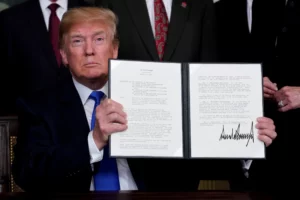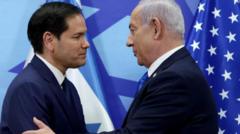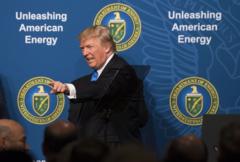*This shift could significantly alter U.S. international relations and the landscape of global trade.*
**Trump's Proposed Tariff Overhaul: A New Era for Global Trade Relations**

**Trump's Proposed Tariff Overhaul: A New Era for Global Trade Relations**
*The President aims to implement tariffs reflecting the trade practices of foreign nations.*
President Donald Trump has taken bold steps to revise the United States' approach to tariffs, signaling a potential transformation in global trade relations. On February 13, 2025, he issued a memorandum instructing his advisors to recalibrate tariff levels for imports based on a variety of trade practices employed by other countries. This initiative aims to address perceived imbalances in trade and enhance America's manufacturing sector by encouraging domestic production.
This directive from Trump asks for an evaluation of foreign countries' tariffs, taxes on imported goods, industry subsidies, and even monetary policies impacting trade flows with the U.S. He has framed this strategy as essential for safeguarding American interests and preventing other countries from exploiting the U.S. trade system. Trump's firm statement, “If you build your product in the United States, there are no tariffs,” highlights his priority of promoting domestic manufacturing.
The implications of this tariff revaluation could be profound, challenging established international trade norms. Historically, the U.S. has participated in a structured trading system defined by treaties and agreements with international organizations such as the World Trade Organization (WTO). Trump's proposed adjustments would mark a retreat from this collaborative framework, moving towards a unilateral approach dictated by U.S. officials.
This ambitious endeavor has raised concerns across various sectors regarding potential retaliatory measures from allies and trading partners. Countries with traditionally lower tariff rates could be particularly affected if the U.S. enacts significant increases. For context, the U.S. currently maintains an average tariff rate of approximately 3%, which is relatively lower than rates in other countries, including India at 17% and South Korea at 13%.
As the administration urges quick calculations from newly appointed officials, including the commerce secretary and trade representative, businesses, economists, and foreign governments are closely monitoring the development. With negotiations likely to intensify and trade dynamics in flux, the response from other nations could reshape economic interactions globally.
This pivot could provoke significant discussions on trade equity, national interests, and the balance of power in international commerce, setting the stage for a contentious environment in the upcoming months as countries respond to impending shifts in U.S. trade policy.





















